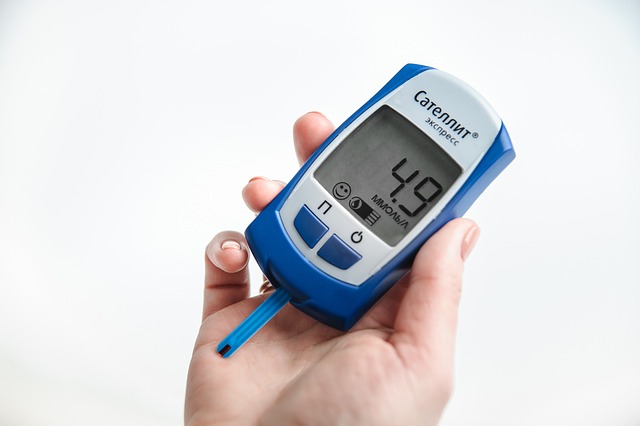Diabetes Awareness Month
November, 2018. Will it be the month that saves your life? Will it save your family members and friends? It may turn out to be a life-saving for millions of Americans because November is National Diabetes Awareness Month.
The American Diabetes Association (ADA) promotes this month to raise awareness of diabetes, from who gets it, to managing or preventing diabetes, to what research is being done to reduce the economic and health burden. This month may be your chance to get a handle on diabetes for yourself or a family member or friend.
Diabetes Basics
Diabetes comes up all the time, but do you know what it is? It is a chronic condition with high blood sugar levels. There are three types of diabetes mellitus:
- Type 1 diabetes: an autoimmune disease that is largely genetic.
- Gestational diabetes: diabetes that occurs during pregnancy.
- Type 2 diabetes: a progressive condition that is largely attributable to lifestyle factors.
Type 2 diabetes is 10 to 20 times as common as type 1 diabetes. It is a condition that develops as impaired glucose tolerance increases.

As you can see in the above figure, the normal condition progresses to prediabetes and then to diabetes as blood sugar rises. This is related to metabolism of carbohydrates from food and insulin’s action in your body.
Your body converts food carbohydrates into a type of simple sugar called glucose and releases the glucose into your bloodstream, which increases blood glucose levels. Your pancreas produce and release a hormone called insulin to help glucose, or sugar, get from your blood into certain cells. This process prevents blood sugar from staying high after you eat a meal.
The process can go awry with certain triggers, such as imbalances resulting from obesity. If insulin resistance develops, your muscle, fat, and liver cells are not as responsive to insulin as they should be. Your body has trouble getting the sugar out of the bloodstream, so blood sugar stays high. This is when prediabetes can be detected. Diabetes is a more severe form of insulin resistance or impaired glucose tolerance with even higher levels of blood glucose.
Why Should You Be Aware?
Diabetes affects more than the people in ads for medications or your grandma or parents. It may affect you now or in the future. Nearly 1 in 8 – or 30 million – Americans have diabetes, including 1 in 4 adults over age 65. Another 84 million – 1 in 3 – Americans have prediabetes and are likely to develop type 2 diabetes within a few years if they do not treat it.[i]
Diabetes is not only widespread, but leads to important consequences.
- It costs over $327 billion each year in medical costs and lost productivity.
- It is the seventh-leading cause of death and a contributing factor in other leading causes such as heart disease, stroke, kidney disease, and Alzheimer’s.
- Other complications can include neuropathy, blindness, and amputations.
If you do not have diabetes or prediabetes, you might still have risk factors. Are you among those with diabetes, prediabetes, or risk factors for those conditions? If not now, you might be, sooner or later. Your focus now can be on:
- Management of blood sugar or diabetes symptoms.
- Preventing diabetes by reversing impaired glucose tolerance.
- Minimizing your prediabetes and diabetes risk factors by living healthy.
Improving Diabetes Management through Awareness and Action
A great reason to be aware of diabetes is that the path that your diabetes takes is not predetermined. At one end of the spectrum is a variety of complications resulting from uncontrolled blood sugar levels. At the other end is good blood sugar control and a low risk of complications. In some cases, reversal of type 2 diabetes can happen![iii]
Genes can affect how your type 2 diabetes progresses, but choices that you make can have least as much impact, on your blood sugar and health. Some of your choices are related to awareness. For example, you can…
- Stay aware of how you are doing with your blood sugar management by asking your doctor for regular blood tests such fasting blood glucose or glycated hemoglobin (A1C).
- Keep aware of related health measures by measuring blood pressure and getting blood tests to assess kidney function and cholesterol levels.
- Call your healthcare provider if you have symptoms of diabetes and high or low blood sugar.
- Make and keep any recommended appointments with specialists for screening for diabetes complications, such as neuropathy, foot wounds, blurry vision, or infections.
- The above steps are quite important for diabetes, but your own daily self-management actions may have far more of an impact on your blood sugar levels. Knowing that your blood sugar levels are largely in your hands can be quite empowering! The ADA supports these regular self-management actions.[iv]
- Obesity management through diet, physical activity, and behavioral therapy if you are overweight, with consideration of metabolic weight loss surgery if you are obese. Research shows that you get to choose whether you follow a low-fat or low-carb diet or opt for meal replacements – they all work if you follow them!
- Engaging in higher levels physical activity, with a goal of at least 150 minutes per week of moderate to vigorous-intensity activities, such as brisk walking, gardening, swimming, dancing, and cycling. Resistance or strength training and breaking up long periods of sitting also reduce impaired glucose tolerance.
- Taking any medications as prescribed.
- Monitoring your blood sugar by taking it as often as your doctor suggests – often in the morning before breakfast, before and after meals and workouts, and before bedtime. Monitoring itself is not strongly linked to lower blood glucose, but monitoring along with education is, and that is what you get with digital health coach Lark Diabetes Care.
Are You Aware?
What should Diabetes Awareness Month make you aware of? You can…
Know your numbers. Get your blood sugar levels tested in a medical lab according to your doctor’s recommendations. That could be once every 3 years if you have no risk factors, once a year if you have prediabetes, or 2 to 4 times a year if you have diabetes.[v]
These are the standard blood glucose tests.[vi]
Test Normal Prediabetes Diabetes Fasting blood glucose
Under 100 mg/dl
100-124 mg/dl
Over 125 mg/dl
Glycated hemoglobin (A1C)
Under 5.7%
5.7-6.4%
Over 6.4%
Oral glucose tolerance test (OGTT)
Under 139 mg/d
140-199 mg/dl
Over 200 mg/dl
Know your risk. You may not have symptoms of diabetes, but you can still have risk factors. The earlier you identify them and change the ones that you can, the better your chances of preventing diabetes or complications.
Risk factors include:
- Overweight or obesity, which affects 2 in 3 American adults.
- Low physical activity, which is characteristic of 4 out of 5 Americans.
- Gestational diabetes, which is the focus of this year’s National Diabetes Awareness Month. Half of women who had gestational diabetes get type 2 diabetes eventually.[vii]
- Age over 45 years.
- Ethnic minority such as Latino, African American, or Asian American.
Know your plan and where to get help. Your doctor may provide you with a prediabetes or diabetes management plan or an obesity management plan, or you might decide to live healthier. If you are not already on track with a healthy living plan, this month is a good time to get started.
Your plan for improving glucose tolerance might include:
- Weight loss.
- Increased physical activity.
- Healthier eating.
If you have diabetes, your daily routine might also include taking medications and measuring your blood sugar.
Know your support options. That healthy lifestyle will be easier with the right support system. Your healthcare team is a good place to start for recommendations, occasional questions, and regular check-ups. Friends and family members can be exercise and weight loss buddies and your cheerleaders.
A health coach can be instrumental in keeping you healthy. Lark Wellness, Lark Diabetes Prevention Program, or Lark Diabetes Care smartphone apps are available to you 24/7 for all-around support, from health recommendations and education, to reminders for medications and exercise, to tracking food, weight, and blood sugar if your doctor recommends it. They even have coaching on stress management and sleep to improve health.
How Will You Win?
The stakes are high and the time is right. Use this Diabetes Awareness Month wisely and you could prevent or manage diabetes, improve health, and feel better all around. You may even save your life.












.webp)







.png)